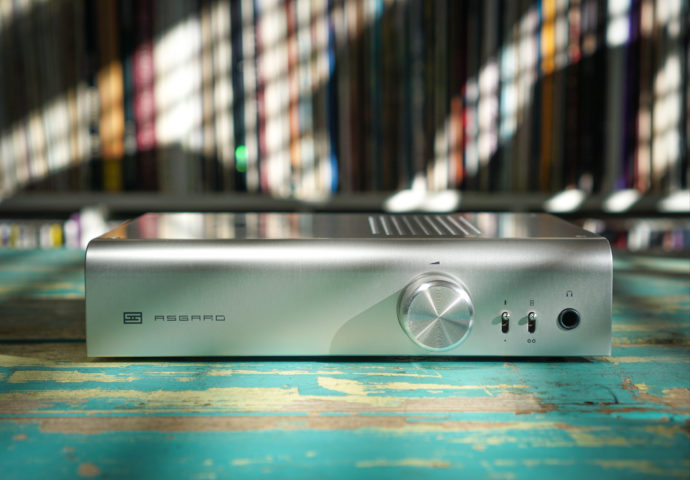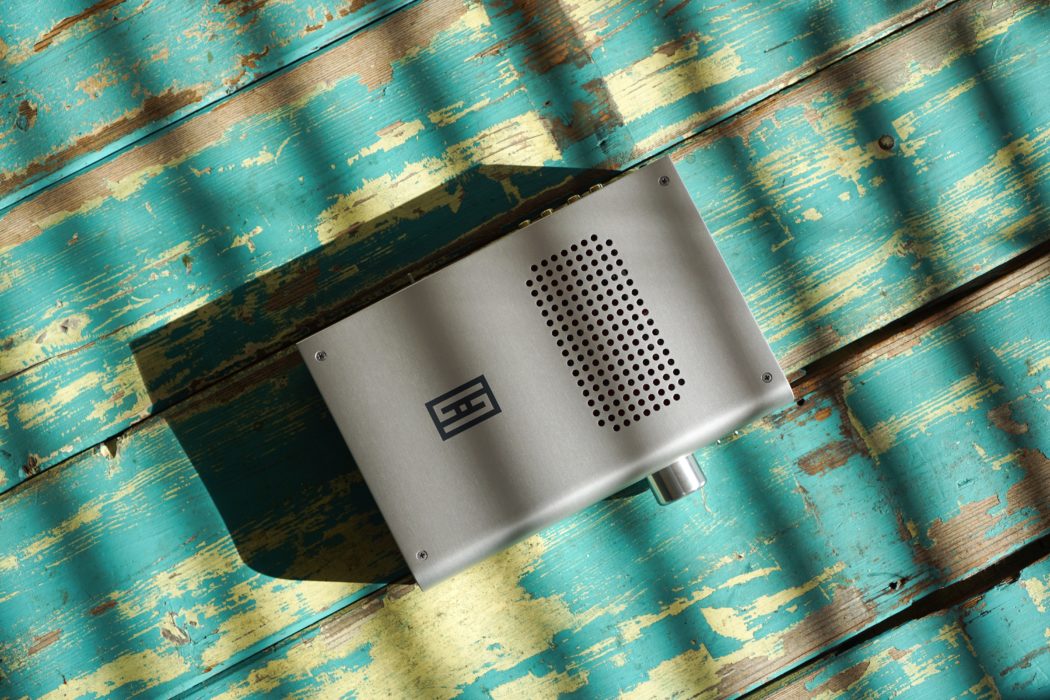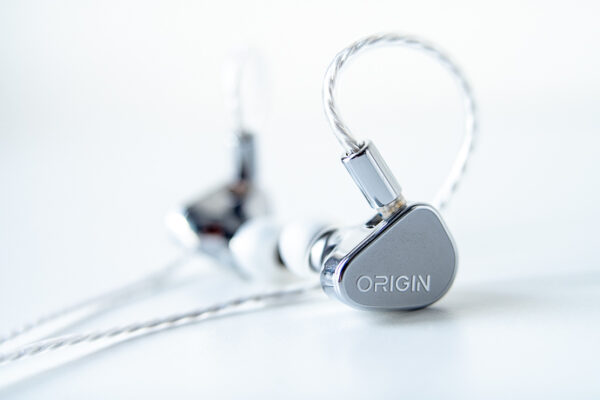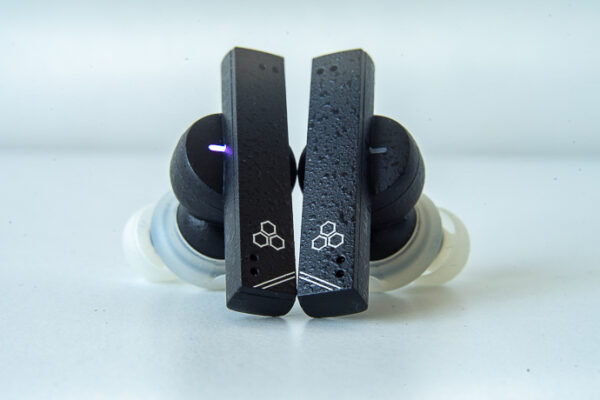Today on Headfonia we’ll be taking a close look at the Asgard 3 headphone amplifier from Schiit Audio. The third evolution of the Asgard retails from $199 for the base amplifier-only version, $299 with an AK4490-based DAC module, and for $399 the Asgard will come equipped with Schiit’s proprietary ‘True Multibit’ DAC module as featured on our review sample.
[responsivevoice_button]
Note: Schiit Audio kindly sent us the Asgard 3 for review in exchange for sharing our honest opinions with our readers. Our thanks go to them for the opportunity and for the quick, courteous communication – we appreciate the support.
Schiit Audio – beyond a joke
Hailing out of Valencia, California, Schiit Audio has steadily worked their way up from being an upstart start-up with a dad-joke-level pun for a name, to an established and respected player in both personal and two-channel audio over the course of the past decade. A disregard for conventional marketing tactics, acerbic website FAQ copy (well worth a read) and playful product naming conventions (I’m looking at you, Fulla) are but a few of the quirks that have helped to contribute to the maverick charm of the Schiit Audio brand. What has cemented Schiit’s reputation, however, has been their ability to deliver seemingly impossible value to customers in terms of performance to price while insisting on designing, assembling, and sourcing most of their parts locally in the USA.
Schiit products have become well-regarded among both novice and seasoned audiophiles alike, and their product line-up has expanded considerably in breadth and depth spanning headphone amplifiers, DACs, preamps, speaker amplifiers, and recently – a turntable, the ‘Sol’. We’ve reviewed many of their products over the years, and you can check out some of our previous Schiit Audio reviews here.
The prodigal son returns
While Schiit’s line-up features some truly impressive and diversified gear, including their flagship Ragnarok 2 headphone and speaker amplifier (reviewed here by Linus), the company had far more humble beginnings. Schiit Audio was founded by industry veterans Jason Stoddard and Mike Moffat back in 2010, and the sole product they hung the hopes of their company upon at launch was the original Asgard – a $249 single-ended, Class A headphone amplifier with one set of RCA inputs, and one 6.3mm headphone output. The “OG” Asgard was superseded by the Asgard 2 in 2013 which retained the $249 price-tag but managed to improve on the original model by adding two selectable gain stages and RCA pre-outs to attenuate the volume of powered monitors or a power amplifier.
While the Asgard 2 managed to pump-out one whole, healthy watt of power at 32 ohms, by 2019 it was starting to feel a bit long in the tooth. Also, it was starting to get shown-up spec-wise by its little brother – the latest iteration of the Magni headphone amplifier (now available in ‘Heresy’ and ‘3+’ flavours depending on whether or not you want to eschew Op-amps in the architecture). But the Asgard 2 managed to soldier-on for as long as it did and convert fans over other amplifiers thanks to its Class-A topology and warm, detailed sound.

Schiit Audio Asgard 3.
There were two surprises in store when Schiit Audio finally unveiled the new Asgard 3 in 2019. Firstly, they managed to increase its power by a factor of 3.5, packing an impressive five watts of power into 16 ohms. And then, somehow they managed to trim fifty bucks off the price tag offering the new, more powerful Asgard 3 for $199. The new Asgard also got a whole bunch ‘smarter’ than its predecessor, following the path of its Jotunheim and Lyr stablemates to provide the option to include a DAC module into the expansion port slot on the read of the amplifier. Selecting the AK4490 delta sigma-based DAC card increases the price of the Asgard 3 to $299; customers who opt for the ‘True Multibit’ R2R/ladder DAC module will need to shell-out an additional $100 bill.
The previous Asgard models had been all Class-A designs, conducting 100% of their input power continuously. I’d spent some time listening to the Asgard 2 several years ago, and in addition to quite liking its sound signature, I distinctly remembered one memorable feature: it gets hot. As in, almost enough to keep your coffee cup warm if you keep it on top of it hot. The new Asgard 3 adopts Schiit’s ‘Continuity’ output stage shared with their Lyr headphone amp and Aegir power amp. It’s now a Class-AB design which may deter some purists, but loads of up to 500mW (probably more than most headphone use cases) will be biased to Class-A.
Upon the launch of the Asgard 3, Schiit was also keen to point out that it has a low noise floor as well as lower distortion than its predecessor, making it suitable for use with sensitive IEMs. How quiet? Well, here’s a quick run-down of the Asgard 3’s vital statistics:
- Frequency Response: 20Hz-20Khz, -0.1db, 2Hz-400KHz, -3dB
- Maximum Power, 16 ohms: 5W RMS per channel
- Maximum Power, 32 ohms: 3.5W RMS per channel
- Maximum Power, 50 ohms: 2.5W RMS per channel
- Maximum Power, 300 ohms: 600mW RMS per channel
- Maximum Power, 600 ohms: 300mW RMS per channel
- THD: Less than 0.002%, 20Hz-20KHz, at 1V RMS, high gain mode (worst case)
- IMD: Less than 0.002%, CCIF at 1V RMS, high gain mode (worst case)
- SNR: More than 115db, unweighted, referenced to 1V RMS, in low gain mode
- Crosstalk: Less than -82dB, 20Hz-20KHz, 300 ohm load
- Output Impedance: Less than 0.2 ohms in high or low gain mode
- Input Impedance: 22K ohms
- Gain: High = 6 (15.6dB) or Low = 1 (0dB), via rear switch
- Protection: Standard muting relay for delayed turn-on and fast turn-off
- Power Supply: Internal 48VA power transformer with 4 separate power supply rails and over 20,000uf of filter capacitance
- Power Consumption: 30W
- Size: 9 x 6 x 2″
- Weight: 5 lbs
The short version: powerful enough to make just about every headphone on the planet go very loud; and basically inaudible levels of distortion. Schiit seems to have delivered quite the ‘do-it-all’ amplifier on paper, and hence we were keen to put it to the test to see if the new Asgard 3 sets a new performance benchmark in terms of not only sonic performance but its ability to live at the heart of your desktop set-up and perform as “the only amplifier you’ll ever need”.
So how does the Asgard 3 stack up in the real world? Let’s take a look!
Head over to Page Two to continue our review, just CLICK HERE.








McLambo
Great review
Now; how to get one in Europe (NL) curreny???
Hermanni
I think there is a website ( schiit audio europe.com ) or something if I remember correctly. There you can buy Schiit stuff if you live in EU.
McLambo
Thanks for the tip Hermanni. I’ve been eyeballing this site for weeks on end, but they have no stock whatsoever due to the coronavirus outbreak I suspect.
Guess I’ll just have to be patient…. :X
MhtLion
Great review. I agree the value is higher as AMP only.
Pal
What a pity no planar pairing in the review 🙁
Matty Graham
Hi Pal, I have my Aeon Flows back in the house now – I’ll add some impressions after a listen.
Pal
Super. I enjoyed reading your review. Thanks.
Alan Kirschbaum
Isn’t the Final a planar?
Jakob Kloppenborg
Looking forward to it.
Bencomo
Good morning ,
thanks for the post, good job
I am a producer of electronic music
work at home with Akg 702 62 ohm,
Beyerdinamic Dt 880 250 ohm
and, an Apollo Twin as a
sound.
What would be the ideal complement:
A20, Crack, Valhalla 2 …?
Greetings .
Matty Graham
Hello mate, the amp mentioned in this article would be a pretty solid starting place for the headphones you’ve mentioned.
Bencomo
Thank you very much MATTY for answering a greeting.
Bencomo
Good morning ,
thanks for the post, good job
I am a producer of electronic music
work at home with Akg 702 62 ohm,
Beyerdinamic Dt 880 250 ohm
and, an Apollo Twin as a
sound.
What would be the ideal complement:
A20, Crack, Valhalla 2 , Asgard 3 …?
Greetings .
Jim
Excellent review! Have been using my Asgard 3 for the past 4 months and continue to be amazed at how well it performs. The A3 may well be the best bargain in headphone amplifiers presently available.
How does Schiit do it?
hole io
Great post! I didn’t knowral of these resources and I’m going to go check them out now!
Joe@Thailand
Thank you very much for a great review. I love it that you always mention volume pot when you review headphone amp. I love amp with good volume pot.
I have watched your interview on the headphone show. It seems like you like and enjoy listening to Sennheiser HD 600 very much.
Could you please tell me why you like this headphone so much? I am thinking about buying this headphone as well.
Thank you very much for your answer 🙂
Matty Graham
Hey mate, the HD600 is a very easy headphone to love. Firstly, because it’s comfortable and fits like a glove. Secondly, because it sound so incredibly natural – voices and instruments sound wonderful and it pairs so well with many genres. Being a 300 ohm headphone it also works nicely with OTL tube amps, which adds another element to its performance.
Jakob S: Kloppenborg
Has anyone tried Planar with this?
Matty Graham
I’m doing some follow-up listening now with the Final D8000, I’ll add some impressions to the comments. Short version: wow.
Jim
Yes. I use my Asgard 3 with my Hifiman HE4XX and my Fostex T50RP MK3, and the A3 has
plenty of power for both headphones. IMHO, both are excellent pairings for under $400 US.
David
Great review. I own multiple Asgard 3s and use it for headphone and preamp duties. The reviewer has done a great job with regard to headphone use, but I want to comment on it with regard to preamp use. I have compared it with many preamps in my own system including Boulder Amplifier, Bryston, Classe, Pass, Soulution, Spectral, Threshold, etc. It has outperformed every preamp that I have put it up against up to $15K and it is better than some even more expensive. The pot is a good one, but many $5K to $15K preamps have stepped attenuators which are better in channel balance and separation. Since I have 40 years of electronic design background I modified a SAGA S and Asgard 3 so I could use the input switching, stepped attenuators, remote control of the Saga S in front of the Asgard 3 that I bypassed the input switch and the volume pot. The result is the best sounding preamp that I have ever tried in a very high quality system. My advice, consider this as the bargain of the decade as a preamp!
Matty Graham
Hi David, thanks for stopping-by and taking the time to comment mate. I hear you regarding the pre-amp section on the Asgard 3 – in fact, it’s still the volume control on my desktop nearfield set-up a couple of months later. I’d love to see more about your ‘Franken-schiit’ arrangement, it sounds awesome!
Keith
Another nice review Matty.
On the strength of your Grado Hemphone review, I ordered one and wonder what you make of pairing the Hemphone with the Asgard 3? I know you mentioned the Asgard in your hempphone review, but is this a perfect match or should I consider something else?
Keith
Matty
Thanks Keith, appreciate your comment mate. I’ve been doing some Hemp + Asgard 3 listening this past week and I can safely say that for the money you won’t find much better by way of pairing.
Ishan Sood
Any thoughts on how this would pair with the Meze Audio Empyreans?
Matty
Probably very well – the Empyreans don’t need a lot of power to get them moving. Of course, you’d be limited to using single-ended only but that shouldn’t cause much by way of audible difference.
Perry
Thank you for the in-depth review. I am considering an Asgard 3 to go with my AKG K240DF (2x600ohms) in a mixing/audio monitoring (home studio) use case. I want it to be as clear and uncolored as possible. Would you recommend the Asgard 3 for this? If so, would you say the AK4490 or Multibit DAC module options would be better for it? If not, what would you recommend for my use case?
Matty
It ought to be fine for your use-cases Perry. As for the DAC, if you plan on only using USB as a source then one of the modules ought to be fine – I’d suggest the 4490 for out-and-out transparency.
Mike Knibbs
I listened extensively to the FiiO K5 Pro before settling on the Asgard 3 with the lower priced DAC card. It was a tough call, as the FiiO is a bargain at its asking price and a fine performer at any price. But the A3 (for me,at least) has the edge I build, feel (lovely pot) and sound quality.
I did all my listening with a Mac USB feeding both into a pair of Sennheiser HD600s – which need some juice. Both products had tons of power and that was not a deciding factor.
The A3 had the FiiO beat for dynamics (with what felt like more immediate kick and ‘sizzle’ where expected. The surprise was the warmth in the midrange and more presence in the bass. Both amps felt restrained at the top – which may be the HD600s fault. But each brought these cans to life in a way that they have needed. The A3 seems like a product that has a build quality that might even outlive the HD600s – and that is saying something. Very pleased.